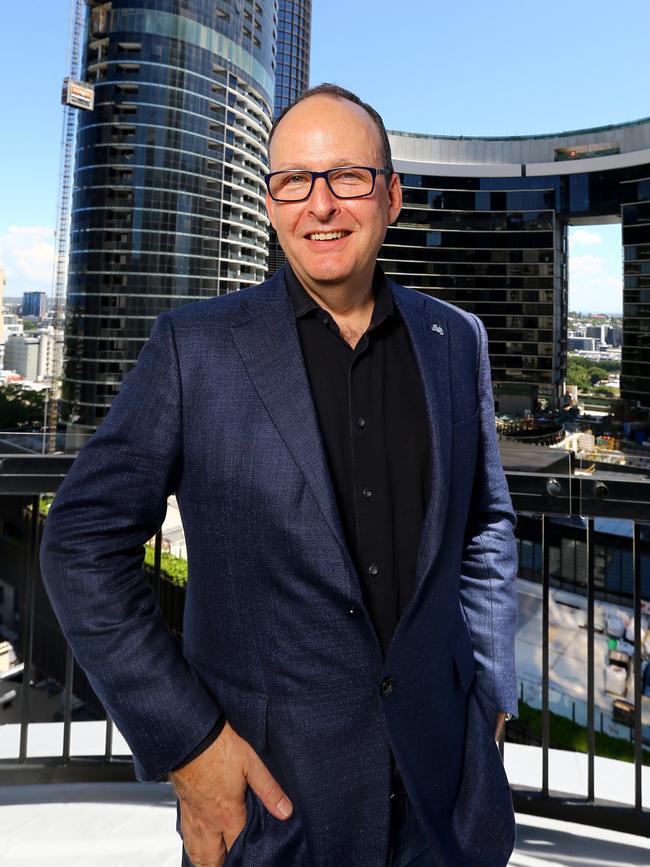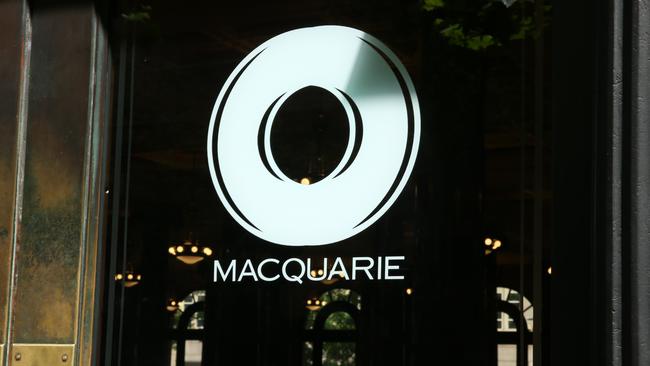The big lessons for Star from Macquarie’s risk hound
There’s one major cultural reason why the casino operator has found itself so deeply in trouble.

Business
Don't miss out on the headlines from Business. Followed categories will be added to My News.
A major cultural reason why the casino operator Star found itself so deeply in regulatory trouble in recent years and was slow to pull out is how the company has perceived itself.
That’s the view of Scott Saunders, a former senior risk officer with Macquarie and more recently Westpac who now heads up risk management inside Star Entertainment.
The root of the problem stems from the Star “seeing itself as an entertainment company”, Saunders says. That’s one where the prevailing view is “the customer’s always right”.
“We are in the process of changing that culture and turning it into a highly regulated entity.”
What that means is driving home the message that sometimes the customer isn’t always right and they may not know what’s best for them.
“Sometimes they’re trying to use our systems to run their nefarious purposes,” Saunders told the NSW inquiry into Star.
“There’s a journey we’re on to move from an entertainment company and how we see ourselves to be regulated and responsible for more than just making the customer happy.”
The comments by Saunders, a highly experienced banker, need to be taken seriously by the inquiry headed by Adam Bell SC examining Star’s suitability to hold a casino licence in NSW.

Saunders is a serious risk and compliance hound and knows his way around some of the nation’s biggest financial hotspots.
As a senior member of Macquarie’s risk management team for more than a decade, he had a hand in refining the investment bank’s “three lines of defence” model that serves it so well and forces each of the businesses and the people within them to own the day-to-day risk management.
Saunders was brought in by Westpac to clean up and help rebuild financial crimes risk management following its Austrac implosion. At Westpac, he assumed responsibility for managing and rebuilding the bank’s fractured relationship with white collar crimes regulator Austrac. This is important for Star’s reset.
Inside Westpac, Saunders sat two notches down from reporting to the CEO, but given the magnitude of what needed to be done he had the ear of Westpac boss Peter King.
Saunders joined Star a little over a year ago, just as the casino was trying to undergo its own painful rebuild under then chief Robbie Cooke.
He says his initial impressions joining Star last February was that it lacked “precision” around its risk settings. Staff were willing to do the right thing and were responsive to feedback, “but they genuinely didn’t know what the right thing was”.
That in itself gave Saunders optimism the cultural changes would follow. He believes Star is making inroads in changing culture, but concedes it is a “hard slog”. He also points out Star is only six months into a two-year change strategy.
While the Westpac rebuild was significant, Saunders concedes he has never worked for an organisation that faces the pressures that Star is under at the moment. The string of executive exits has added to the pressure.
“It’s a very challenging environment, and it’s not getting easier,” but quickly added it is on the right path.
Telling too, that following a string of witnesses last week, Saunders is the first to touch on the fractured relationship with Star’s key NSW regulator. He acknowledged relations were badly out of synch and needed to be repaired. He started the process by saying Star needed to fix it and send off an email to the NSW Independent Casino Commission at the start of this year in an effort to open the door for repair and asked for a meeting.
Saunders said in the email: “We simply don’t seem to be on the same wavelength with key regulators, something that The Star needs to own.”
Unknown to Saunders, the NICC had just received a stinging challenge from Robbie Cooke. The nature of Cooke’s complaint was about a highly critical assessment on Star’s progress in overhauling its culture.
Months later Cooke was forced to resign, and the regulator had called the inquiry, dubbed Bell Two. Cooke is scheduled to appear at the inquiry this week, and his appearance will shed more light on the links between the Star and the state’s casino regulator.
Hitting the brakes
With some of the smartest bankers in the room, Macquarie has built a reputation for spotting a financial trend long before anyone else. This means any sudden strategy shift is worth taking note of.
The global investment bank has quietly decided to slam the brakes on car financing. It has been a good business since Macquarie moved into it in the 1990s and things really got moving over the past decade.
Indeed, the investment bank was in the process of building it up as other banks such as ANZ and Westpac were getting out. Macquarie snapped up ANZ’s $8bn Esanda dealer finance portfolio eight years ago and was planning an expansion into Europe. In 2019, it was overseeing nearly $15bn of loans through personal loans and dealer financing.
But as its mortgage and banking business has been ballooning in recent years, Macquarie has kept its car business stuck in the slow lane. Latest figures show the portfolio was sitting at $4.8bn at the end of December, and that was down 8 per cent on the quarter.
As one banker says, car financing can represent reasonable returns, but potential headaches are substantially higher.
While secured, the losses run high, and there’s the hassle of chasing troubled borrowers for the security and then there’s the murky world of distributing through third parties such as auto dealers. Unlike houses, the value of the asset rapidly diminishes as a matter of course.
At the same time, car loans are among the first to turn bad when the economy slows. The number of bankruptcy claims in the Federal Court initiated by the financing arms of BMW and Mercedes have spiked in the past year. Combined with an expected slowing in new car sales – including EVs – all this looks ominous for the broader economy as Macquarie makes a hasty retreat.

While the macro trends are important, it is really Macquarie that is changing. In shutting down its car lending business on Monday, Macquarie’s personal banking boss, Ben Perham, says it is his intention to prioritise home loan and deposits.
Under CEO Shemara Wikramanayake, Macquarie has invested heavily in its bank and in 2018 it moved from a white label bank (providing banking services for others) to building out its own digital offering. This allows it to own its customers directly. By doing this it has been growing its mortgage book and deposits at double-digit rates, often cherry-picking the best markets and this often meant the best customers from the big four banks. This model attempts to move away from third-party distribution such as brokers, and dealers in auto financing. Growth is capital intensive and represents a better bet than hanging on to a car business that faces a bumpy future.
At the end of December, Macquarie’s three-month annualised housing loan growth was running at 12.8 per cent compared with the average of the bank sector at 4.5 per cent. Deposit growth was running at 16.9 per cent compared to 4.7 per cent of the broader banking sector. Macquarie’s home loan book is now pushing $120bn.
There are questions – albeit from competitors – about Macquarie’s longer-term commitment to retail banking, particularly as its relatively immature lending portfolio starts to age, and it faces the hard slog of retaining customers. The investment bank has a history of reinventing itself through the economic cycles, moving its capital to the next profit pool and leaving rivals in its wake.
Perham said Macquarie sees opportunity to continue to invest in mortgage and deposit products “to attract more customers”.
The Macquarie move come as Citi analysts led by Brendan Sproules became the latest to issue a wholesale downgrade of the banking sector, marking the first time since 2015 the brokerage has had a sell call on each of the big four banks. In short, Citi says bank shares have run their course for now, given recent strength and a relatively poor earnings outlook.
Sproules points out the diverging risks of the big four lenders. NAB’s new chief Andrew Irvine faces the prospect of slowing business growth and rising investment demands. ANZ through its Suncorp buyout has a complicated integration to grapple with. Westpac this month unveiled an ambitious technology transformation, while Commonwealth Bank continues to perform well but with shares up 15 per cent over the past six months they appear “gravity-defying and hard to chase”.
The big four will deliver their interim results from next week.
johnstone@theaustralian.com.au
Originally published as The big lessons for Star from Macquarie’s risk hound





